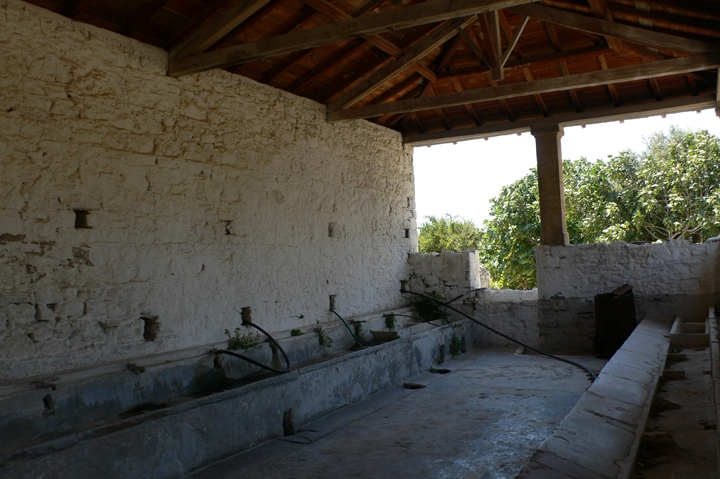Collective Story-Laundering
The village laundries established at Koumeika, Skoureika and Neochori traditionally played a very important role in the social life of the women in these villages, not only offering them facilities for washing their clothes, but for also for exchange of local gossip and stories, particularly those which they did not wish to tell (or tell in the same way) in the presence of men. The laundry buildings still exist, strategically located in each village. The Amfilissos Area Collective Story-Laundering Project aims to convert these buildings in order to reclaim and develop the collective story-telling and recreational functions that they once hosted. It is part of Bricolabs’ Water-Flow series of projects which aim to enhance and develop the social and cultural aspects of these flows through spaces and processes “doubled” the physical world and the world of imagination. It adds the social dimension to the Bricolabs open source washing machine project
Koumeika Laundry: Interior, before its planned conversion to become a collective “story-laundry”
This project will enable Collective Story-Laundries to emerge as hubs for a form of social communication that was lost with the introduction of the “domestic washing machine”: z technological artefact that transformed “doing the laundry” from a social activity into an individual activity, performed by women alone in their own homes.
The Collective Story-Laundries will provide facilities to enhance the creation and exchange of stories (spoken performed and/or made i multimedia) of particular relevance in the lives of the women and young people in the area who, once again, will visit the story-laundries and enjoy the social and cultural amenities that they can provide.
The first stage in the Amfilissos Area Collective Story-Laundering Project will be to organise a Spritivity Workshop, centred on the three Laundries, whereby young people from Samos work together is creative groups to imagine and create the “sprites” that might inhabit each of these laundries. Each sprite is located both in the physical world where the laundry buildings are located and in the imaginary and mythical world addressed by the stories that were exchanged in these laundries in te past, and that could be exchanged there in the future.
These sprites can become the actors in collectively improvised performances, through which future facilities supporting collective-story laundering are envisaged,and played out in the context of each of the three laundries and put to work in imagining an enriched future for the Amfilissos area. This in turn can identify the functionalities which can be supported through the physical transformation of the laundry buildings, the spaces they can incorporate and the pathways they can link.